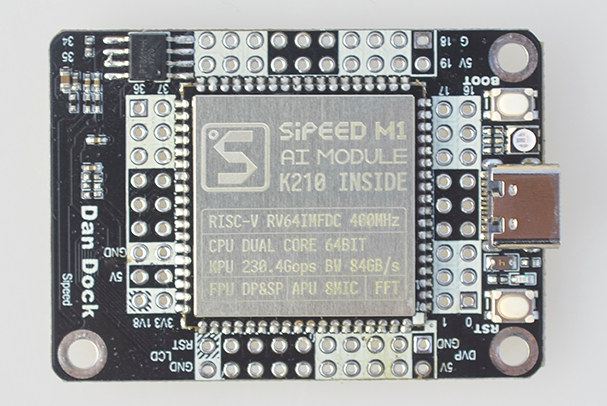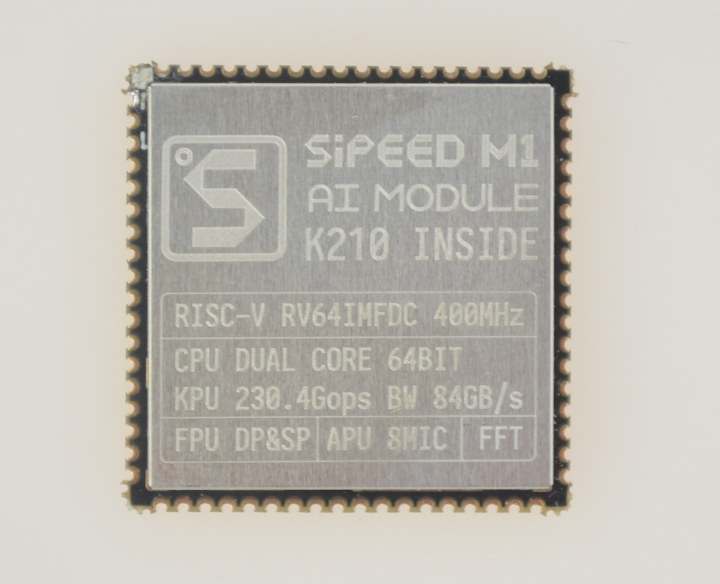Just a few days ago, I wrote about Kendryte KD233 board featuring Kendryte K210 dual core RISC-V processor, with some fairly detailed documentation, public links to toolchains and other tools. and going for $50. But the team behind LicheePi boards informed me that they also made their own K210 module called Sipeed M1 and selling on Taobao for the Chinese market, as well as on Yoycart for $10.89 plus shipping for the oversea market, and you’ll find a devkit with a dock board for about $24 and up depending on options.
Sipeed M1 module specifications:
- SoC – Kendryte K210 dual core 64-bit RISC-V processor @ 400 MHz with KPU CNN hardware accelerator, APU audio hardware accelerator, 6 MB general purpose SRAM, 2MB AI SRAM memory, and AXI ROM to load user program from SPI flash
- Package – 72-pin (25.4 x 25.4mm)
But you’ll probably want to get start with M1 “Dan” Dock (Lichee Dan) instead since it offers convenient 2.54″ through holes and a USB type-C port for power and debugging.
 The main features of the board include:
The main features of the board include:
- Storage – micro SD slot
- Display I/F – An FPC24P socket for 8-bit MCU LCD
- Camera I/F- An FPC24P socket for DVP camera
- Audio – Power amplifier IC for use with speakers, built-in microphone
- USB – USB Type-C interface
- Connectivity – Optional WiFi
- I/Os
- On-board high speed DAC
- Access to all 72-pin full pin lead-out, freely mapable
There are kits with display, WiFi, camera, and so on. With regards to documentation you’ll find resources I already shared in my previous post about Kendryte K210, as well as a Wiki and documentation on Baidu specific to Lichee Dan. The Baidu link however is mostly interesting for the schematics. Whyengineer also posted some code examples on Github.
The company said they ported Micropython to the module including XYZ-modem support. Lots of the resources and in Chinese, but they have a Telegram link where you can chat in English if you have questions. A short Face Detection demo has been uploaded to YouTube to showcase the machine vision capabilities of the platform.

Jean-Luc started CNX Software in 2010 as a part-time endeavor, before quitting his job as a software engineering manager, and starting to write daily news, and reviews full time later in 2011.
Support CNX Software! Donate via cryptocurrencies, become a Patron on Patreon, or purchase goods on Amazon or Aliexpress





